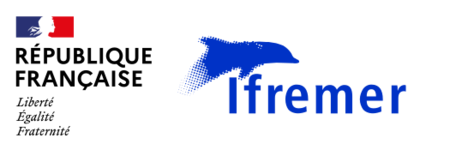Monitoring networks
Observation and monitoring sometimes cover the same field of action, but are distinct. Observation is a tool for acquiring knowledge and carrying out scientific activities. Monitoring is a tool implemented to comply with regulations or address a specific public policy issue.
For IFREMER, the major monitoring networks aim to meet the needs for the surveillance of shellfish and their production areas for public health and animal health, environmental monitoring for the WFD and MSFD and for the assessment of fisheries resources for the Common Fisheries Policy. They are generally run and operated by IFREMER staff employed in the environmental resources (LER) laboratories and the fisheries laboratories (LH).
Monitoring networks
REMI, the network for testing the microbiological quality of shellfish from production areas
This network monitors the microbiological quality of shellfish in the production areas used by professionals and classified by local governments. Based on bacterial counts of E. coli in live shellfish, REMI grades the level of microbiological contamination, follows their trends over time and detects contamination outbreaks. To meet these goals, the monitoring network is organised into two types of surveillance: regular, planned surveillance and outbreak surveillance. This network is coordinated by the RBE department which has expertise in bacteriological and virological contamination in marine shellfish. The data are assembled in the Quadrige database.
REPHYTOX: the phycotoxin monitoring network
This network screens for toxic phytoplankton and measures the toxicity of shellfish in production areas and in fishing areas. Certain toxins are screened for in REPHYTOX are dangerous for consumers, because they accumulate in shellfish (diarrheic, paralysing, amnesic, etc. toxins) and other are dangerous for marine fauna (fish, shellfish, etc.). The data are assembled in the Quadrige database. It is coordinated by the ODE department.
REPHY: the phytoplankton and hydrology observation and monitoring network
REPHY is one of IFREMER’s scientific priorities and ensures the monitoring of phytoplanktonic population dynamics and the related hydrological conditions. REPHY contributes to the knowledge on the impact of climate change on marine biodiversity and participates in the monitoring of the environmental status of the marine environment for the WFD and the MSFD. It is the main French observatory for marine phytoplankton. The data are assembled in the Quadrige database. It is coordinated by the ODE department.
ROCCH: the chemical contamination observation and monitoring network
This network is the main coastal chemical contamination assessment tool. ROCCH aims to describe the temporal changes in chemical contamination of the French coasts and test the chemical contamination of shellfish of commercial interest. It is based on sampling and analysis of sediments and organisms. The data are assembled in the Quadrige database. It is coordinated by the RBE department.
REPAMO: the mollusc pathology network
This is the marine mollusc disease monitoring network set up to meet European regulations regarding aquatic species. It monitors pathogens that infect shellfish species of commercial interest for food production. It is coordinated by the RBE department.
RESCO and MYTILOBS: shellfish observation networks
These observation networks aim to provide standardised data on survival and growth for sentinel batches of common origin and placed in different oyster production sites (Crassostrea gigas) and blue mussel (Mytilus edulis) production sites.
The assessment of fisheries resources is carried out through various networks (Obsmer, Obsventes, Obsdeb, cruises) implemented by the Fisheries Information Systems laboratory (SIH).
Assessment of fisheries resources
The assessment of fisheries resources is carried out through various networks (Obsmer, Obsventes, Obsdeb, cruises) implemented by the Fisheries Information Systems (SIH) laboratory.
Obsmer: observation aboard fishing boats
Obsmer is a catch sampling programme aboard professional fishing boats. Obsmer aims to estimate the composition of the total catch, including in particular the discard fraction, and to observe current fishing practices and operations in detail. It meets European obligations for fisheries data collection. The data are compiled in IFREMER’s centralised fisheries database Harmonie. It is coordinated by the RBE department.
Obsventes: observation of the fish market
Obsventes seeks to measure the size of fish presented at French fish auctions according to a statistical sampling plan defined annually nationwide. The data are compiled in IFREMER’s centralised fisheries database Harmonie. It is coordinated by the RBE department.
Obsbed: observation of landings
Obsbed aims to estimate fishing effort and species-specific landings in regions where catch reporting data are incomplete and of poor quality. The sampling plan is based on the analysis of seasonal activity. The zone covered is the Mediterranean Sea, the French Antilles, French Guiana, and Reunion Island. The data are compiled in IFREMER’s centralised fisheries database Harmonie. It is coordinated by the RBE department.
Fisheries science cruises
Scientific cruises meet the need to collect information on
- the management of the Common Fisheries Policy,
- the implementation of standardisation as defined collectively in international instances,
- management plans and their assessment, including ecosystem variables,
- geographic coverage according to national priorities (fish stocks and zones under French jurisdiction).
Scientific cruises provide continuous data time series. The data are compiled in IFREMER’s centralised fisheries database Harmonie. They are coordinated by the RBE department.
